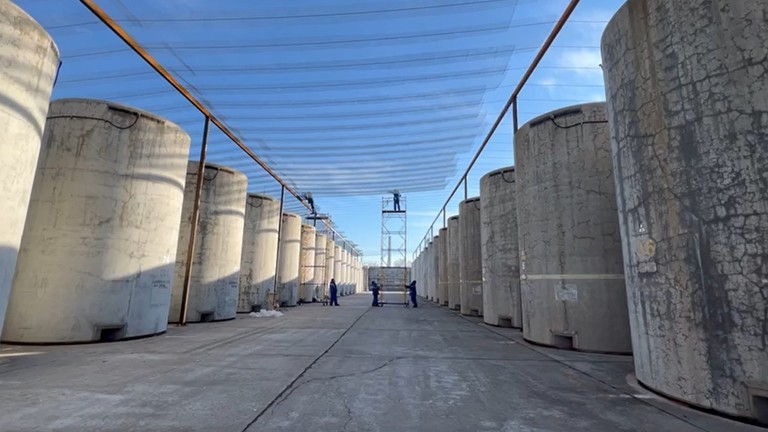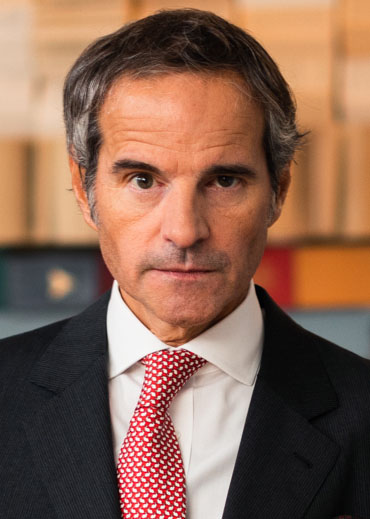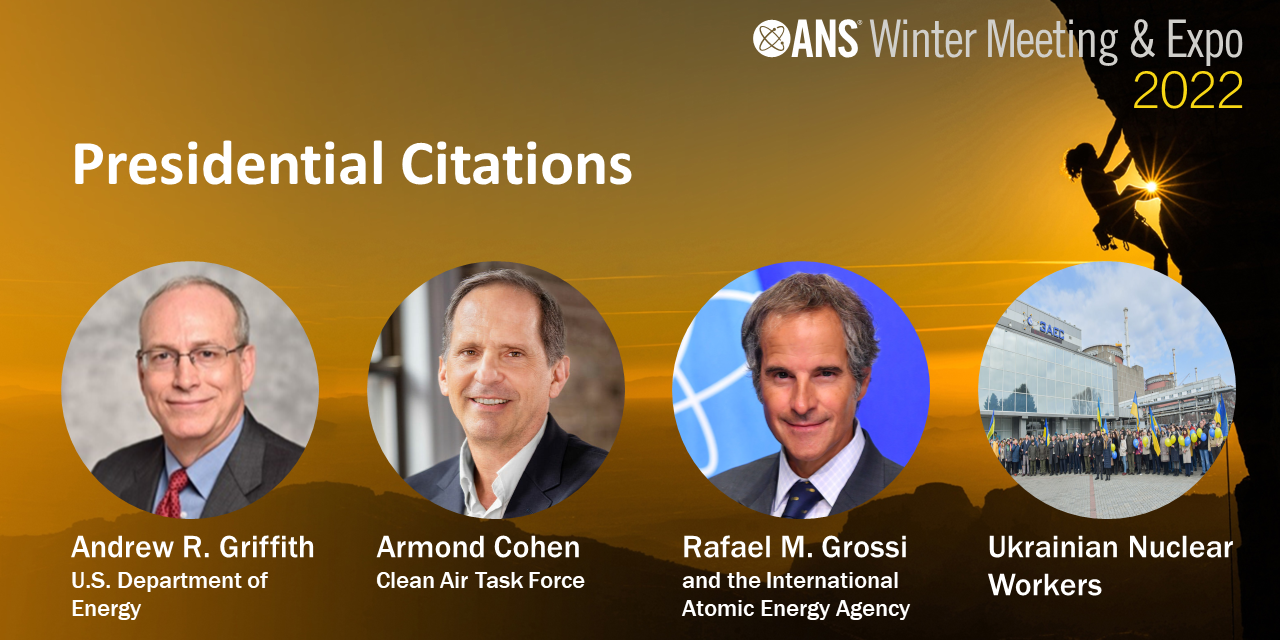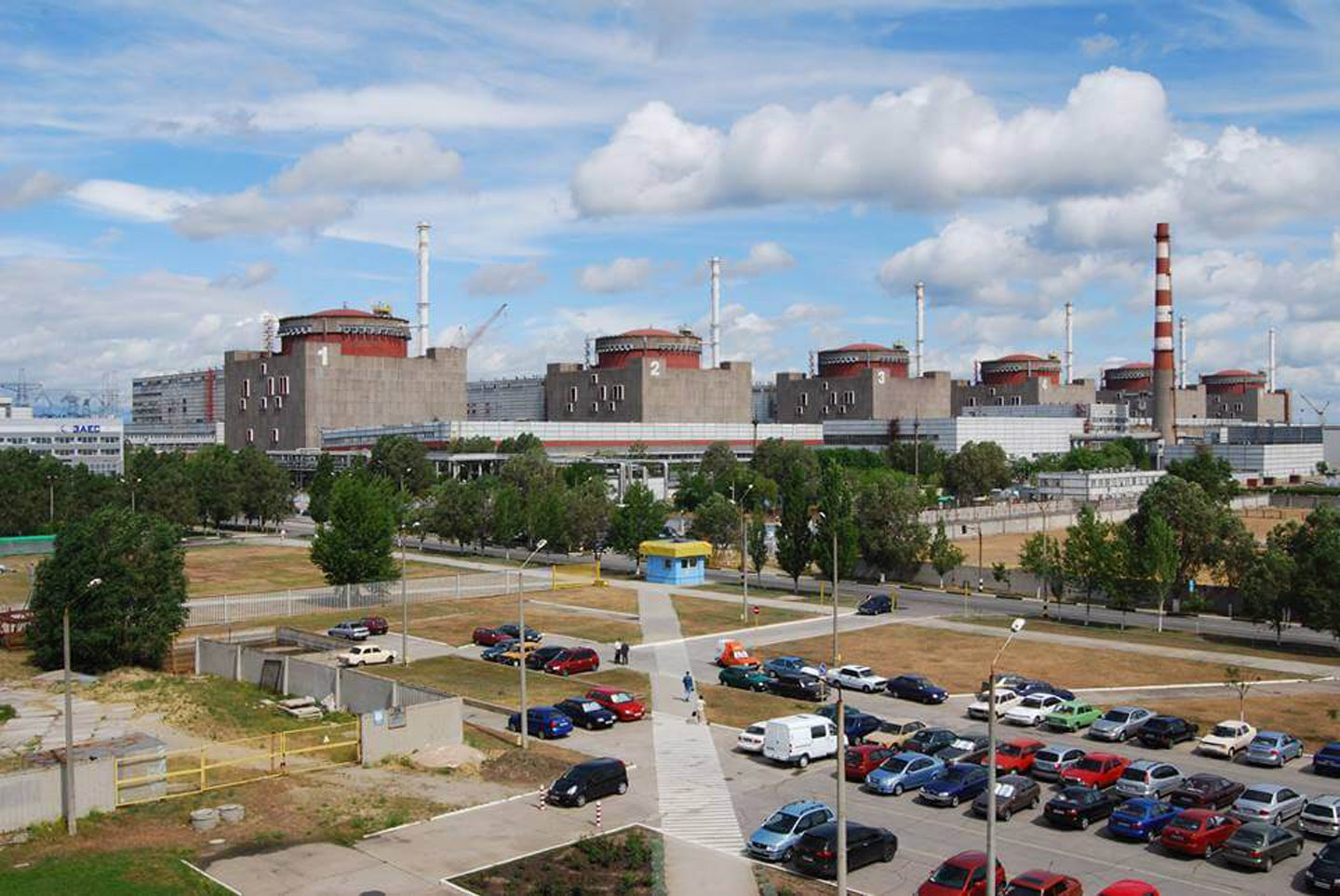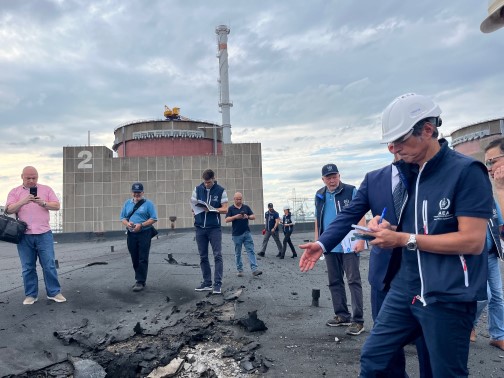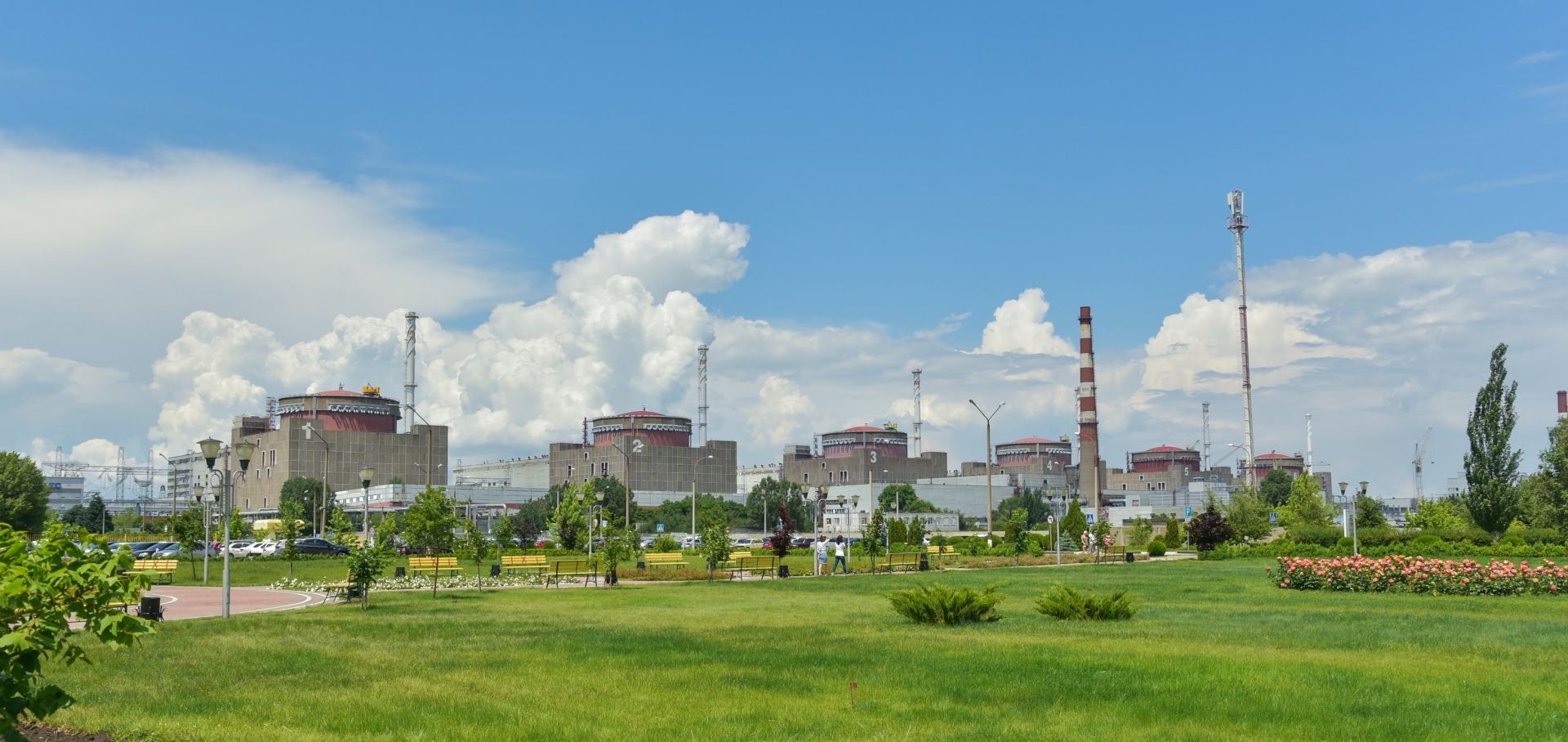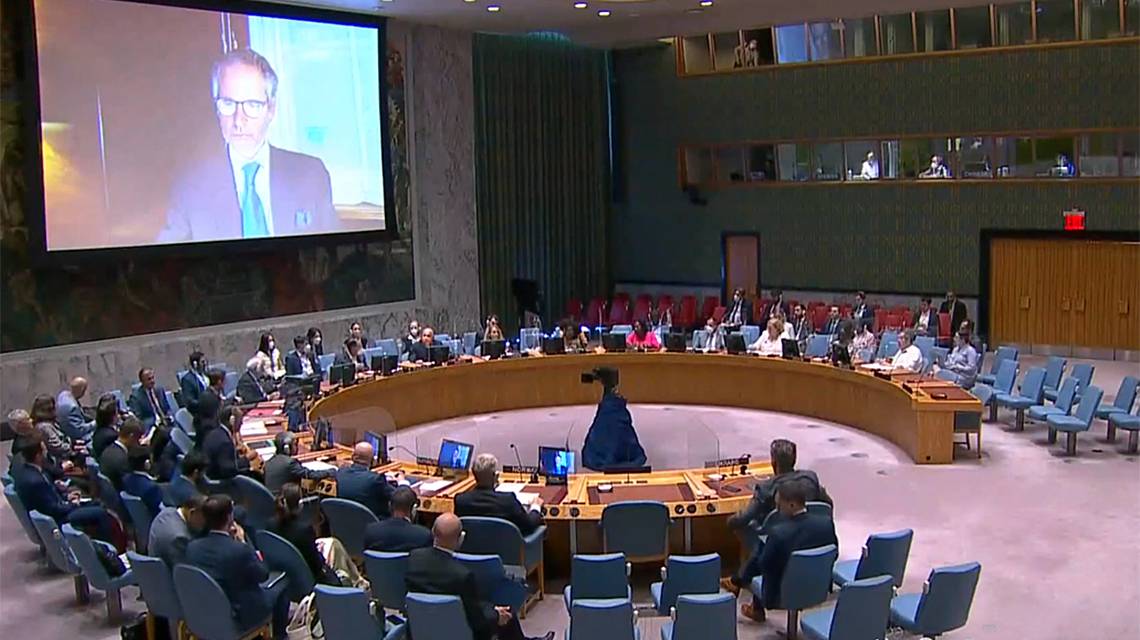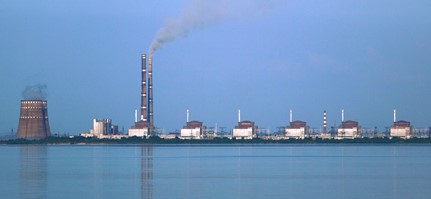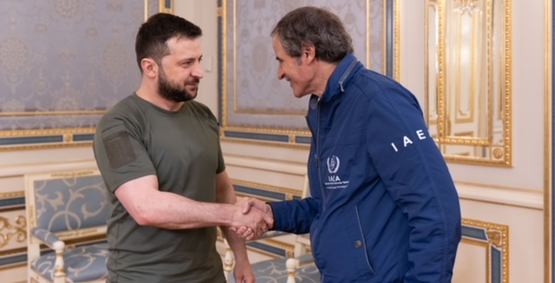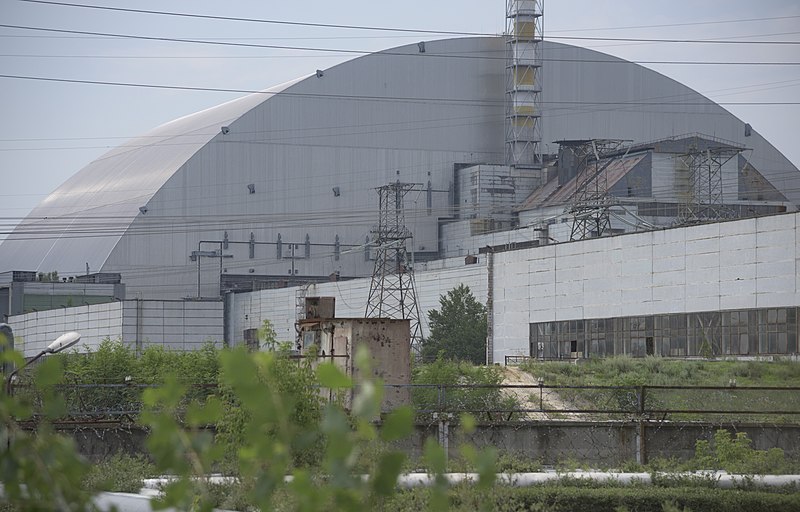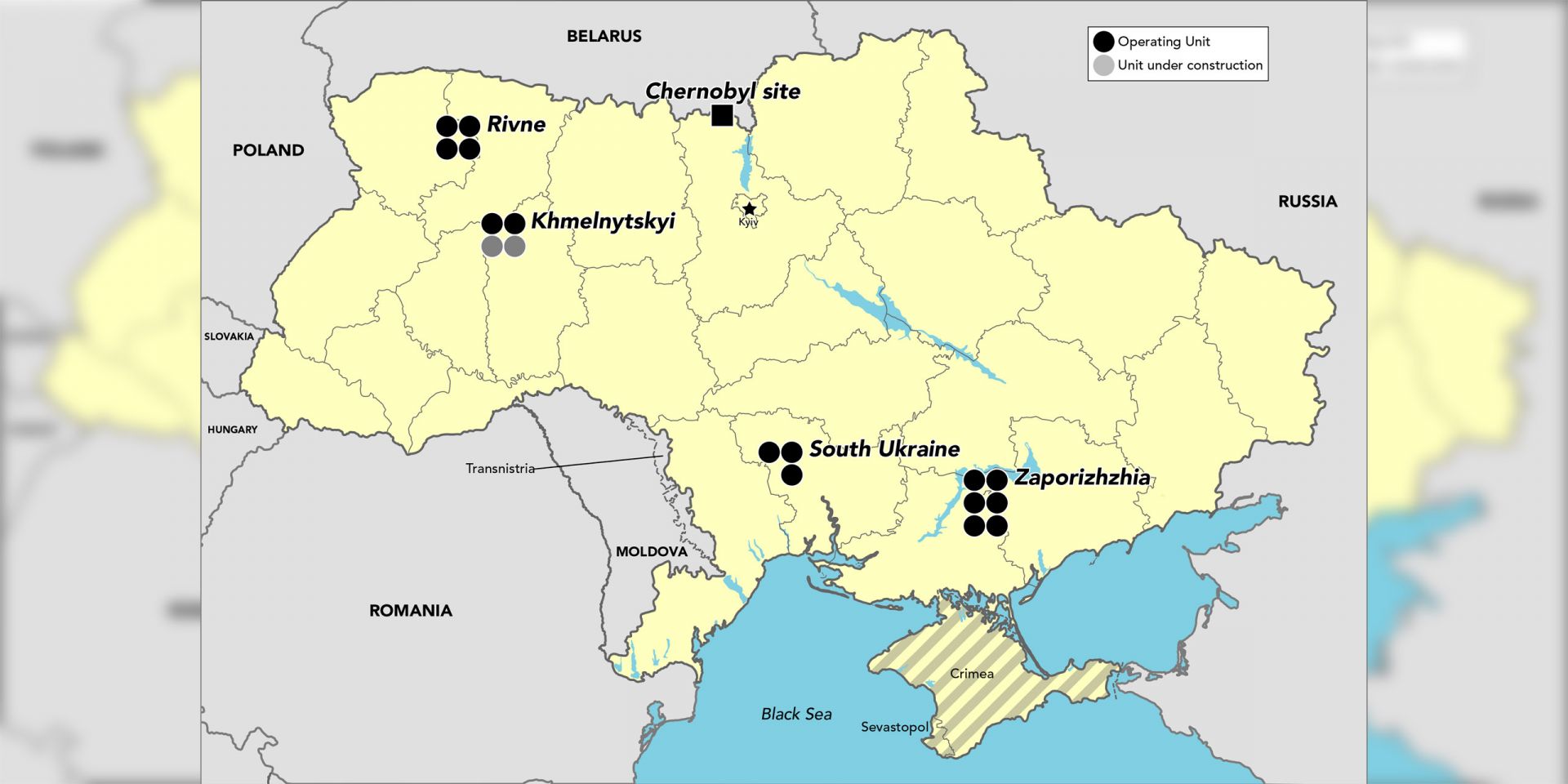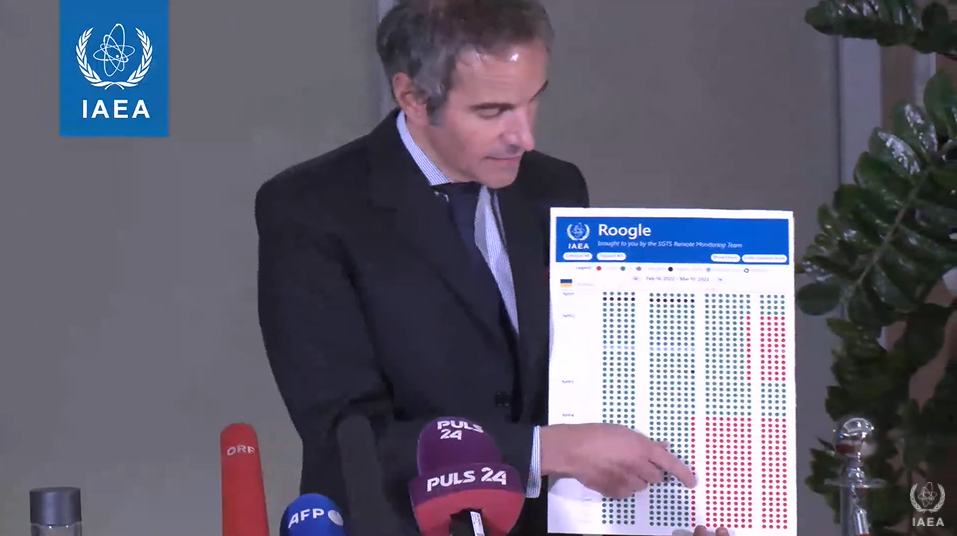This image from a video reportedly shows the start of installation of a protective covering over spent fuel storage tanks at the Zaporizhzhia nuclear power plant in Ukraine. (Image: Telegram/Vladimir Rogov)
Russia has begun construction of protected covering at Ukraine’s Zaporizhzhia nuclear power plant, according to a December 17 report from Russian news outlet RT. The story has been picked up in the West by some news agencies but has not been widely circulated.
Vladimir Rogov, a Russian-appointed official in Zaporizhzhia Oblast, said, “Russia is constructing a protective dome over spent radioactive fuel stores at the [Zaporizhzhia] nuclear power plant as Ukrainian forces continue to target the facility.”
The Zaporizhzhia nuclear power plant.
The International Atomic Energy Agency’s board of governors has adopted a resolution calling for an immediate end to the Russian occupation of Ukraine’s Zaporizhzhia nuclear power plant. According to a report from Reuters, the 35-member board voted 26–2 yesterday in favor of the resolution, with seven abstentions. The two “no” votes were cast, unsurprisingly, by Russia and China, while abstentions came from Burundi, Egypt, India, Pakistan, Senegal, South Africa, and Vietnam.
IAEA director general Rafael Mariano Grossi (at right) inspects damage at Ukraine’s Zaporizhzhia plant on September 1. (Photo: Fredrik Dahl/IAEA)
IAEA director general Rafael Mariano Grossi (center) with his team of nuclear safety, security, and safeguards experts at the Vienna International Airport on August 29, prior to their departure for Ukraine’s Zaporizhzhia nuclear power plant. (Photo: Dean Calma/IAEA)
After months of urgent entreaties to both the Ukrainian and Russian governments to allow the International Atomic Energy Agency access to the embattled Zaporizhzhia nuclear plant, IAEA director general Rafael Mariano Grossi yesterday set off for the facility, accompanied by a team of nuclear security, safety, and safeguards experts.
The Zaporizhzhia plant (Image: Energoatom)
Energoatom, Ukraine’s nuclear plant operator, is reporting that Units 5 and 6 at the Zaporizhzhia plant—currently the facility’s only operational reactors—were disconnected from the country’s power grid early in the morning of August 25.
The Zaporizhzhia site has been under the control of the Russian military since March 4, just days after Russia commenced its invasion of Ukraine.
The Zaporizhzhia nuclear power plant. (Photo: Ralf1969, Wikimedia Commons)
The latest news on Ukraine’s Zaporizhzhia nuclear power plant—under occupation by the Russian military since early March—sparks some hope, but also more anxiety.
The good: This morning, Russia requested that the United Nations Security Council hold a meeting tomorrow on the situation at the six-unit pressurized water reactor plant, according to RIA Novosti, a Russian state-owned news agency. The RIA report cited a post via the Telegram messaging app from Dmitry Polyansky, Russia’s first deputy minister at the UN. In the post, Polyansky said the meeting is scheduled for “22:00 Moscow time on August 23.”
Rafael Mariano Grossi, the IAEA's director general, addresses the UN Security Council via video link on August 11. (Photo: IAEA)
Contradictory accusations concerning the artillery shelling of the Zaporizhzhia nuclear power plant in war-torn Ukraine continue to be made by the Ukrainians and Russians. Both sides have acknowledged several hits on the facility, including 10 artillery strikes on the plant’s administrative office and fire station on August 11. As the two countries blame each other for the attacks, independent authorities have been unable to verify the opposing claims.
Meanwhile, at a meeting of the UN Security Council, Rafael Mariano Grossi, director general of the International Atomic Energy Agency, warned that the situation was in “a serious hour, a grave hour.” UN secretary general António Guterres added that it could “lead to disaster.”
A group shot of Energoatom and Westinghouse personnel at the Khmelnytskyi nuclear power plant in Ukraine, where the first two AP1000 reactors under a recent agreement will be constructed. (Photo: Westinghouse)
The war in Ukraine notwithstanding, Westinghouse Electric Company has stepped up its partnership with Energoatom, Ukraine’s state-owned nuclear utility, signing agreements last week to supply all of the nuclear fuel for the country’s operating reactor fleet and to collaborate on the construction of nine AP1000 units for Ukraine, rather than the five earlier envisioned.
Ukraine’s president, Volodymyr Zelensky, thanks IAEA director general Rafael Mariano Grossi for the agency’s support, including its April 26 mission to Chernobyl. (Photo: IAEA)
The director general of the International Atomic Energy Agency, Rafael Mariano Grossi, led a mission to Ukraine’s Chernobyl nuclear plant this week to address ongoing radiological safety concerns at the shuttered site following five weeks (February 24–March 31) of Russian military occupation.
The New Safe Confinement structure over the damaged fourth reactor at the Chernobyl nuclear power plant. Photo from 2018.
Ukraine’s nuclear operator, Energoatom, announced yesterday that the Russian military has withdrawn from the Chernobyl plant and surrounding area. “According to the staff of the Chernobyl nuclear power plant, there are now no outsiders on-site,” Energoatom stated in an online post. Russian forces took control of Chernobyl on February 24, day one of the invasion.
In a separate post, the company said that the Russians had formally agreed to return the responsibility for Chernobyl to Ukraine. It shared a scan of a document, with the heading “Act of acceptance and transfer of protection of the Chernobyl nuclear plant,” purportedly signed by a representative of Russia’s National Guard, a representative of Rosatom, Russia’s state atomic energy corporation, and a Chernobyl plant shift manager.
March 30, 2022, 11:55AMANS Nuclear CafeJacopo Buongiorno, Steven Nesbit, Malcolm Grimston, Lake Barrett, Matthew L. Wald, and Andrew Whittaker The six reactors at the Zaporizhzhia nuclear power plant in southeastern Ukraine.
On March 4, Russian forces set fire to an office building at Ukraine’s Zaporizhzhia nuclear power plant, raising fears about reactors being damaged. The attack stirred up memories of the Chernobyl accident in 1986, a reaction that longtime nuclear opponents are taking advantage of to rekindle their cause. However, the reactors operating in Ukraine today are profoundly different from the design used at Chernobyl, and are, by nature, difficult to damage.
Let’s set the record straight and explain the risks of nuclear power plants in war zones.
At the press conference, Grossi explained that the IAEA has stopped receiving safeguards information from certain monitoring systems installed at Ukrainian nuclear facilities, as indicated by the red dots.
IAEA director general Rafael Mariano Grossi traveled to Antalya, Turkey, on March 10 to meet with Ukrainian foreign minister Dmytro Kuleba and Russian foreign minister Sergei Lavrov to discuss the safety and security of Ukraine's nuclear facilities. After returning to Vienna, Grossi held a press conference at which he said that a “common denominator” had emerged from the discussions and that both sides agree that something needs to be done. “They are both ready to work and to engage with the IAEA,” he said. “So this is a very important building block.”
Energoatom’s Zaporizhzhia plant, in southeastern Ukraine. (Photo: Energoatom)
Latest on Zaporizhzhia: As of this morning, Russian military forces have taken control of the Zaporizhzhia nuclear power plant in Ukraine. The Russian military began shelling the Zaporizhzhia nuclear plant in southeastern Ukraine, resulting in a fire at the site on Thursday.



